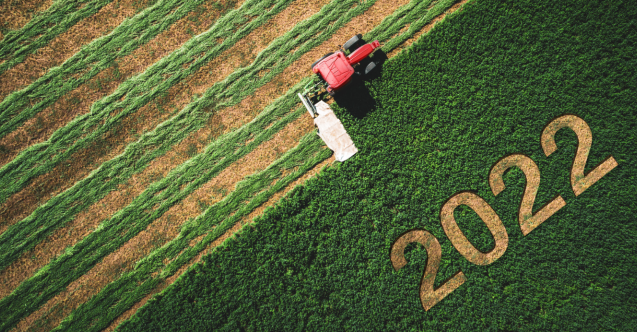Agicultural Export And Financing Tools In Türkı̇ye
Türkiye has a high export potential in agriculture with its geographical advantages and workforce potential.

At the Agriculture Fair we held in Adana as MUSIAD on June 9, we said, "The world is talking about food, agriculture is on the global agenda". All economies on a global scale interact and integrate with each other. This situation results in being globally affected by de- velopment in any part of the world. The protectionist country policies, which we saw the first signs of as a result of the pandemic that started in 2020, and which have become the reality of the world with the occupation of Ukraine by Russia, have adversely affected the food industry in many countries. The contraction in the supply of products supplied from producer countries and the disruptions in the supply chain deepened the problem.
As a country, we have the chance to turn this critical pe- riod into an opportunity. In order to take advantage of this chance, we need to use our export potential in agricul- ture. It can be said that a historical opportunity has come our way, considering the amount of our arable lands, the labour potential required for this, and our geographical advantages. There are some things we need to do to seize this opportunity. We must establish government policies to increase the use of our arable land. We should carry out planned agriculture with the coordination of our Ministry of Agriculture. We should simplify the farmer support policies, and most importantly, we should support the product, not the land. Agriculture is a difficult field, involving risk and uncertainty and considering the high costs, the farmer cannot take this risk and ops out of production. For this reason, we should create policies to minimise the farmer's production risk and support contract farming. We have to make legal arrangements for this. We should assign 2-3 villages responsibility to each of our agricultural engi- neers who have completed their education, and raise the awareness of the producers on what and how to produce more efficiently with this model. We should engage and encourage youth in agriculture. We should support women farmer initiatives. We must turn the villages into agricultur- al cities and make agricultural-based industrial initiatives. We should support R&D studies related to agriculture. In this way, we should be able to produce agricultural products focused on value-added products.
We should use agricultural cooperatives more effectively. We must establish agricultural cooperative systems and structures that will support the farmer at every point of production. Thus, the producer will see himself as less risky and will feel safe. Where trust is established, the number of investors and entrepreneurs will increase. Utilisation
rates of arable land will increase. In this way, competition will increase, but since the cooperative makes objective scientific valuations in both production and determination of base prices, instead of destructive competition, constructive competition will increase, and product quality will rise. More value-added products will be produced. At the end of the day, a country, which has an area equivalent to Konya becomes the second largest exporter of agricultural products in the world. Our country has the potential to become the world's leading country in agriculture and animal husbandry in terms of its arable land size, climate, human resources and geographical location. As long as we focus on agriculture and facilitate our processes, facilitate the business processes of farmers, entrepreneurs and in- vestors, and develop our culture of doing business together.
The most fundamental issue for increasing agricultural production is the diversity, continuity, easy accessibility of financing opportunities and providing these opportunitiesto the right places at the right time. The farmer has to fi- nance the production costs at every stage of the production process and earns income only during the harvest period. This is an important financial burden on the farmer. The incentives given must be provided at the beginning of the production process. Otherwise, the farmer will be in debt throughout the period and will have to allocate some of his income here. In addition, giving incentives to the product, not the land, is a sensitive issue in terms of reaching the right people. On the other hand, the application, evaluation and finalisation stages of incentives should be simplified and made easier.
The future is in agriculture! Ahead of us, we have a tough period, but also full of opportunities. It is up to us to seize this opportunity. We have the power and potential to be the world leader in agriculture. As a country, we should evaluate this process correctly, set our goals high and work towards it. We do not have the luxury of leaving a square meter of our land empty. For agriculture and our future, we should focus on efficiency, sustainability, effective use of technol- ogy and improving our culture of doing business together.
Cemal Özen
Chairperson of MÜSİAD Food, Agriculture and Livestock Sector
































